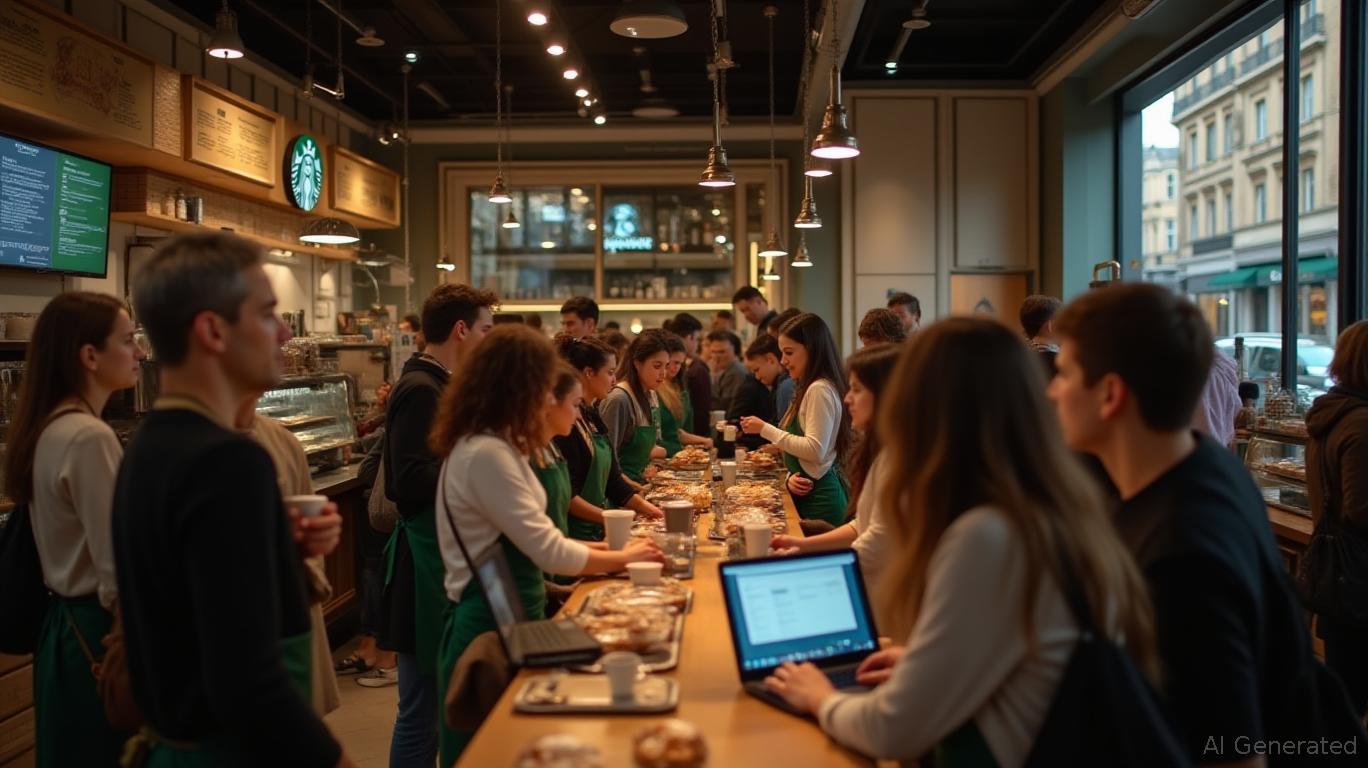Starbucks' Pricing Power and Consumer Sentiment: Navigating Inflationary Crosscurrents
The global coffee giant
(SBUX) faces a complex economic landscape in Q2 2025, with divergent inflation trends across its key markets—the U.S., EU, and China—testing its ability to balance pricing power and consumer sentiment. While rising tariffs and energy costs loom in the U.S., the EU enjoys moderate inflation, and China grapples with deflationary pressures. Starbucks' strategic agility in these contrasting environments will determine its profitability and market resilience.
U.S. Market: Tariffs and Consumer Resistance
In the U.S., inflation remains subdued at 2.4% annually but faces risks from trade policies. The Yale Budget Lab estimates households now pay $2,500 extra annually due to tariffs, with goods like appliances and toys already seeing price spikes. For Starbucks, this creates a dual challenge:
1. Input Costs: Rising tariffs on imported goods, including coffee beans and equipment, could squeeze margins unless passed to consumers.
2. Consumer Sentiment: Americans are price-sensitive amid lingering inflation anxiety. A 0.3% uptick in grocery prices in May signals potential backlash against further price hikes.
Starbucks has historically prioritized affordability, with its average U.S. beverage price at $3.50. To avoid alienating customers, the company may rely on premium products (e.g., Nitro Cold Brew, seasonal drinks) and loyalty programs to offset cost pressures. A would reveal whether price increases have eroded demand.
EU Market: Disinflation Creates Pricing Flexibility
The EU's inflation rate has eased to 1.9%, with energy prices falling 3.6% annually. This provides Starbucks with a rare opportunity to raise prices without immediate consumer pushback. The company's European strategy, which emphasizes premiumization (e.g., ethically sourced beans, artisanal lattes), could boost margins. However, regional disparities persist: Germany's 2.1% inflation rate contrasts with Estonia's 4.6%, requiring localized pricing.
Starbucks' expansion into underserved EU markets, such as Eastern Europe, could capitalize on stable pricing conditions. A would highlight this opportunity.
China: Deflation Demands Value-Driven Tactics
China's CPI has been negative for four months, with deflation at -0.1% in May. Weak domestic demand and automotive price wars have pressured Starbucks to rethink its value proposition. While core inflation (0.6%) suggests some stability in services, transport costs dropped 4.3%, reflecting broader economic malaise.
To retain customers, Starbucks is rolling out discounted “Value Menu” items and partnering with delivery platforms like Meituan to drive traffic. However, its premium brand positioning risks dilution. A would show how deflation impacts its growth trajectory.
Strategic Opportunities: Digital Innovation and Global Diversification
Starbucks' long-term success hinges on three pillars:
1. Digital Engagement: Its loyalty app and AI-driven order customization can reduce reliance on physical store traffic while boosting margins.
2. Supply Chain Resilience: Diversifying bean sourcing (e.g., expanding Brazilian production) and reducing tariff exposure through regional manufacturing hubs.
3. Market Mix Optimization: Shifting focus to high-margin beverages (e.g., cold brew) and limiting exposure to deflation-hit markets.
Investment Implications
Starbucks' stock has underperformed the S&P 500 in 2025, down 8% YTD amid macroeconomic uncertainty. However, its brand strength and adaptive strategy position it well for recovery if it navigates these crosscurrents effectively. Key metrics to watch:
- Margin Trends: Gross margin expansion in the EU and China.
- Price Elasticity: U.S. same-store sales after pricing adjustments.
- China Growth: Revenue rebound as deflation eases.
Conclusion
Starbucks' ability to balance pricing power with consumer sentiment will define its 2025 performance. While inflation risks loom in the U.S. and deflation tests China's markets, the company's agility in premiumization, digital innovation, and regional diversification offers a path to sustained growth. Investors should view dips as buying opportunities if Starbucks demonstrates margin resilience and strategic execution. In a world of economic crosscurrents, Starbucks' global scale and brand equity remain formidable advantages—if managed wisely.

Comments
No comments yet